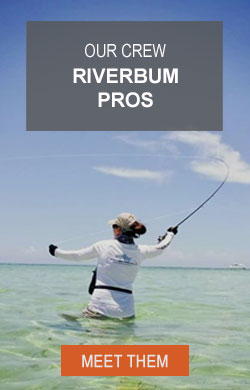Dropper Detail
The dry-dropper rig is one of the staple techniques of modern fly fishing. Seems easy enough, right? Tie on a dry fly, tie a length of tippet to the bend of the hook, and tie on a bead head or otherwise weighted nymph. It really isn't rocket science, but what makes all of the difference between some success and great success with dry dropper rigs are the little details. Here are a few things to think about that will help you catch more fish with the dry-dropper rig.
1. Weight of the dropper. I think most anglers tie on any bead head fly and expect it to just go down. That's not going to happen in fast or rough water. I've been lucky enough to fish in several international competitive fly fishing tourneys and have peeked into the boxes of some of the world's best anglers. Most of them have their nymphs arranged and coded in some way according to weight. Weight matters. Obviously, heavy flies sink better and stay down where the fish are, but this rig is much less effective if you sink the dry fly. Experiment with different weights of dropper flies keeping in mind: The heaviest fly that doesn't sink the dry is probably the right guy. (Say that last sentence over and over) Try weighing your nymphs to get precise weights or at least bounce them in your hand a few times to determine their approximate weight.
2. Length and diameter of the dropper. Make sure that the dropper tippet is long enough and fine enough to allow the fly to get near the bottom. Remember finer tippet and flourocarbon tippet sinks faster. Many anglers, including myself on too many occasions, keep the dropper the same length and weight for every run out of laziness and reluctance to change. I have, however, fished droppers as long as 10 feet and had some success in doing so. Casting is tough, but possible. Some of the best anglers I've watched and fished with and against keep myriad droppers of varying lengths and weights tied and ready to fish at all times. You might try wrapping these around something and storing them in a vest or pack pocket to keep them out of the way. I've seen many devices and contraptions rigged to do just such a thing and even a few that are commercially available. I use a simple piece of heavy cardstock with slits cut into it to keep the loose ends of the dropper tippets secured while they are stored.
3. Fish the right dry fly. Adequate buoyancy is required in the dry fly used in this rig, however, don't ignore the possibility of actually catching fish with the dry fly by using a crazy modified bobber with a hook through it that isn't likely to catch fish. Even in situations where it's more likely to catch most of your fish on the nymph, fish a dry fly that you feel the fish could actually like.
By fine tuning your dry-dropper rigs with the right flies and the right tippets you will become more and more efficient and effective as an angler, and you'll have fun becoming so.






